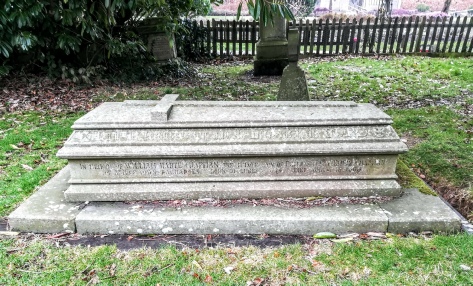Friends of Hastings Cemetery
AO K05
Chapman, William Harte
Born 1st December 1846,
Died 18th August 1865, Aged 18
In memory of William Harte Chapman the beloved son of Peter and Mary Emlin Chapman of Bridgetown, Barbados.
August 18th 1865: At St Leonard's-
AO K05
Chapman, Peter
Born March 1808, died November 1874, aged 66
AO K05
Chapman, Mary Emlin
Born October 10th 1811, died February 1888, aged 73
__________________________
Professor Emeritus Sir Woodville Marshall presented a paper entitled: '“Designing” individual or “celebrated solicitor”? Peter Chapman's activity and role as land speculator after Emancipation'.
On 28 August 1833, the British Government decided to pass the Slavery Abolition Act, brought into effect on 1 August 1834, and slaves across the British Empire were granted Emancipation.
Although the Slavery Abolition Act was meant to officially cease slavery, there remained a four year ‘apprenticeship period’, whereby ‘free men’ continued to work without pay in exchange for small housing. This continued until 1 August 1838, when it was finally agreed that all slaves were to be truly set free.
Whilst they were still obliged to work the land of the plantation owners in return for a salary, it allowed them to begin to accumulate savings.
For the first time, this also put them in a position to purchase land in Barbados. However, plantation owners were reluctant to break up their estates for purchase. There were exceptions. Reynold Alleyne Elcock in 1841-
Peter Chapman who had held six areas, with a total of 73 slaves, and was the principal land speculator of the period during the 1850's subdivided at least three St George plantations, ?1853, Campion Castle 1854, and Workmans, 1856, out of which villages of the same names were formed.
Later, in 1856 – 1857, Peter Chapman, as owner of Enterprise Estate, divided this estate into sellable lots, of 1 to 2 acres at £70 an acre, which labourers could purchase by instalment. Thus was created Workman's village in the St George Parish, setting a trend for the creation of ‘free villages’ in Barbados.
A deed dated December 23, 1856, records the sale of “Enterprise Land” to Peter Chapman. A price of €3,500 was paid for the 1023/4 acres. Chapman, an enterprising solicitor, had the property surveyed, divided into one and two acre lots and put up for sale at a price that averaged €70 per acre. Many persons could not complete payment after making a deposit and lost both the land and their money. As a result, Chapman never sold all of the land since sections were returned to him whenever payments could not be met. On his death there is no mention of this property in his will, but informants reported that the land, plus the money due for it, went to his son-
The descendants of Peter Chapman collected payments for many years, but the landholders could never raise the amount required to obtain title.
After many years, the Chapman family stopped making collections Today the Chapman family owns none of the village. The villagers explain this by referring to a legendary deathbed statement of the last member of the Chapman family. “In his speech”, villagers claim, “he said that Enterprise people have paid enough; they can keep the ground”.

